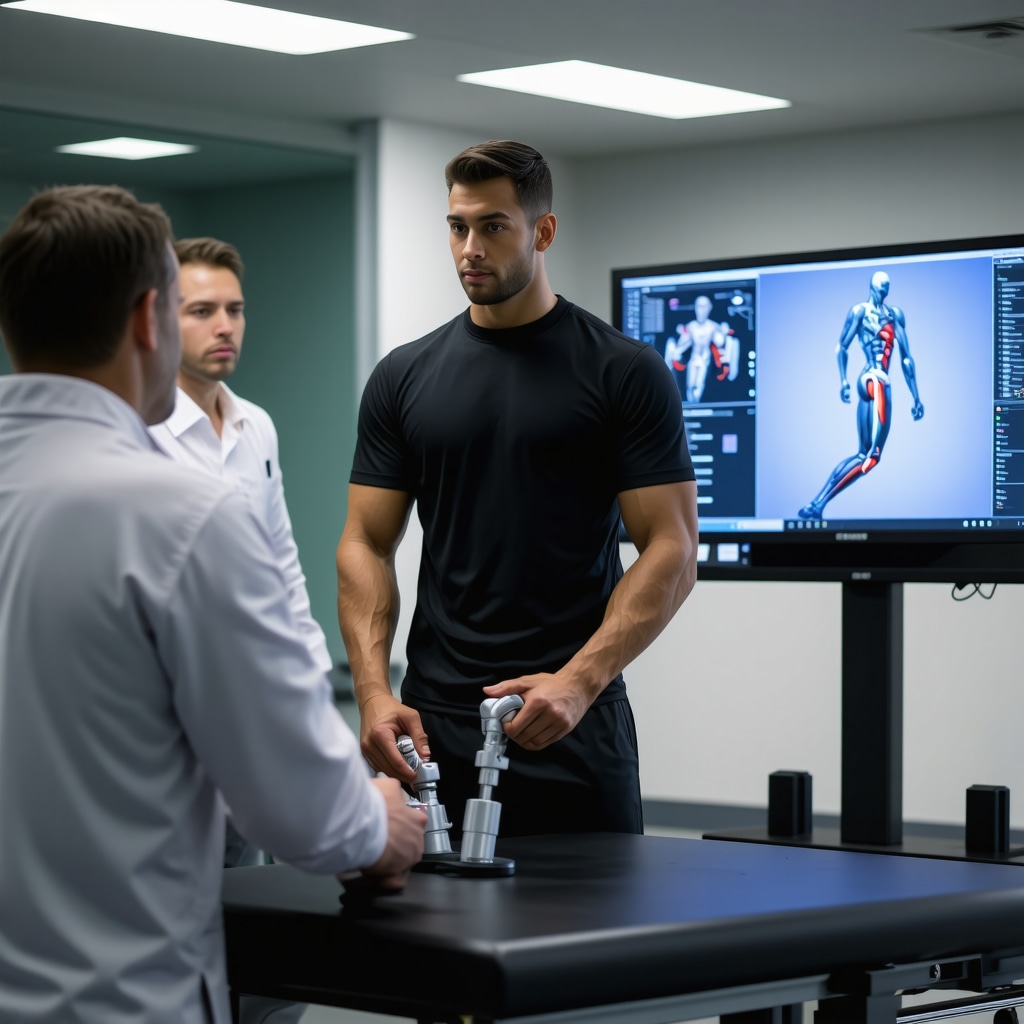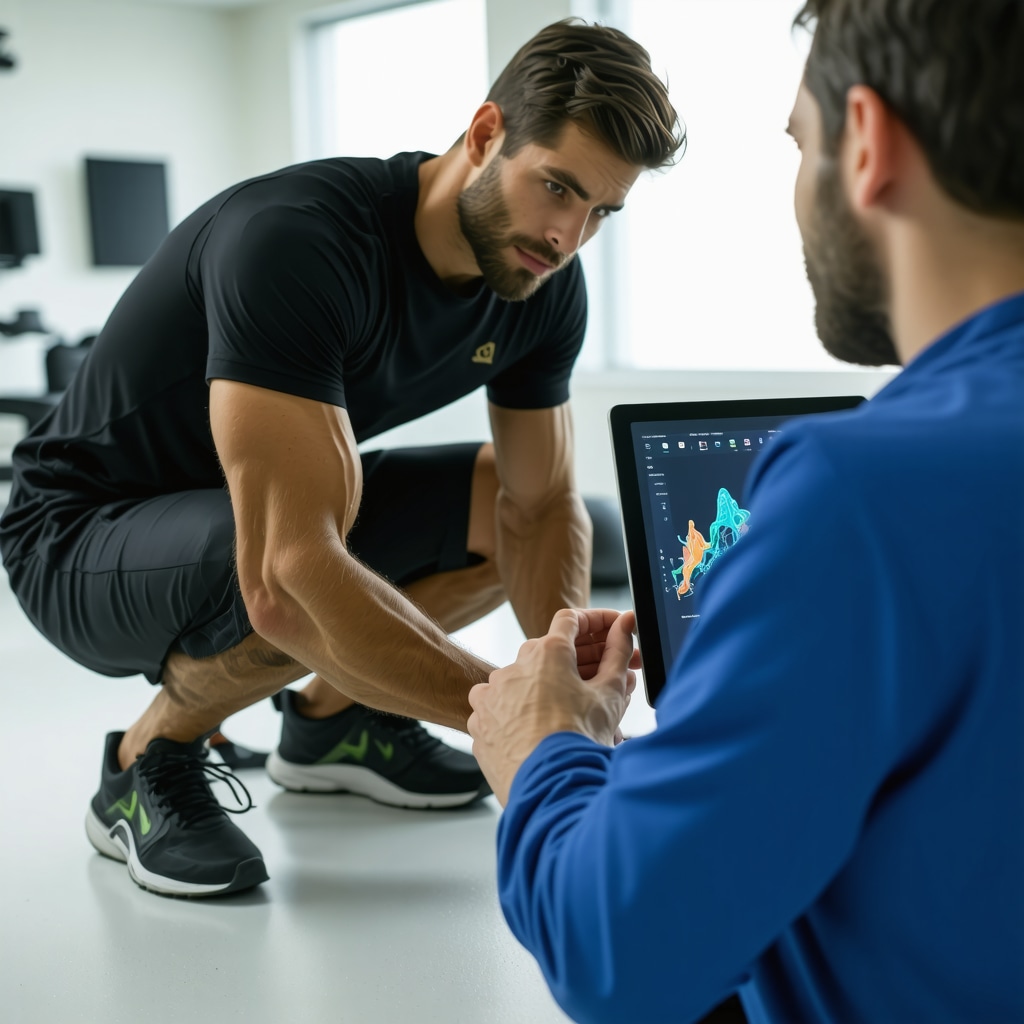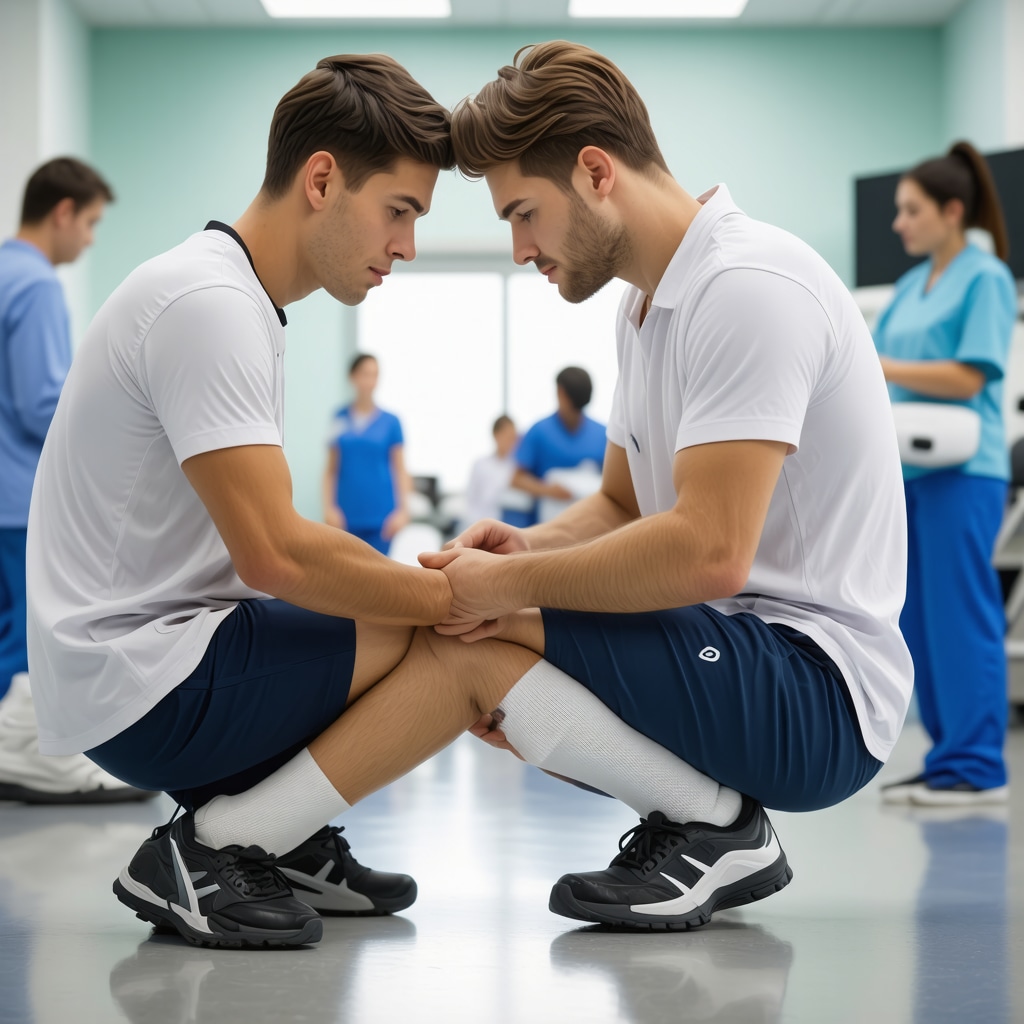When the Game Stops: Why Your Recovery Deserves More Than Just Ice and Aspirin
Picture this: you’re sprinting down the field, heart pounding, the crowd roaring, and then—bam!—a sudden twist, a sharp pain, and just like that, your season is sidelined by a sports injury. We’ve all been there, or at least watched it happen, and the path from injury to recovery can feel like navigating a maze blindfolded. But here’s the kicker: smart orthopedic care tailored to sports injuries can transform that daunting journey into a manageable (even enlightening) process. Let’s dive into the best practices for recovery that truly make a difference.
Orthopedic Magic: More Than Just Fixing Bones
Orthopedics isn’t just about putting you back together; it’s about understanding the intricate dance between muscles, ligaments, and bones, especially when sports injuries strike. From sprains and strains to more complex tears, expert orthopedic care focuses on comprehensive evaluation and personalized treatment plans. Incorporating minimally invasive techniques, physical therapy, and sometimes innovative injections, these treatments aim to restore function while minimizing downtime.
Is It Just a Bruise or a Game-Changer Injury?
This is the million-dollar question every athlete asks. The truth? Not all injuries are created equal, and misjudging severity can be costly. That’s why early and accurate orthopedic evaluation, like the post-accident orthopedic evaluation, is critical. It ensures you get the right care at the right time, avoiding chronic problems down the road.
Recovery Roadmap: The Art and Science of Healing
Recovery isn’t a one-size-fits-all sprint; it’s a marathon paced by expert guidance. Best practices include a mix of rest, targeted physical therapy, and sometimes advanced interventions such as orthopedic injections for pain relief and inflammation control. According to a study in the National Center for Biotechnology Information, integrating multidisciplinary orthopedic approaches significantly improves outcomes in sports injury rehabilitation.
For those curious about the nitty-gritty of physical therapy, resources like orthopedic physical therapy treatments and benefits offer a deep dive into what to expect during your healing journey.
Why Gamble with Your Recovery When You Can Play It Smart?
The road to recovery shouldn’t feel like a blindfolded game of chance. Expert orthopedic care ensures you’re not just healing but coming back stronger. If you’ve experienced a sports injury and want to explore personalized recovery options, why not reach out to an orthopedic specialist? Sharing your story or questions in the comments below can also build a supportive community that learns and heals together.
Precision in Diagnosis: Unlocking the Full Picture of Your Injury
Beyond the initial shock and pain, a thorough and nuanced orthopedic assessment is the foundation of effective sports injury management. Utilizing advanced imaging technologies such as MRI and ultrasound, specialists can uncover subtle soft tissue injuries or hidden bone stress reactions that conventional X-rays might miss. This diagnostic precision allows for tailored treatment plans that address not only the obvious damage but also the underlying biomechanical factors contributing to injury risk and recurrence.
Innovative Treatments: Beyond Conventional Recovery Methods
Modern orthopedic care embraces innovation by integrating biologic therapies like platelet-rich plasma (PRP) injections and stem cell treatments, which promote natural tissue healing and reduce recovery times. Combining these with traditional physical therapy and minimally invasive procedures enhances healing quality and functional restoration. If you’re interested in exploring these cutting-edge options, check out our guide to minimally invasive treatments for more insights.
How Can Personalized Orthopedic Rehab Transform Your Return to Play?
Personalization is the game-changer in rehabilitation. Orthopedic specialists consider your sport-specific demands, injury history, and biomechanical profile to craft a rehab program that rebuilds strength, flexibility, and neuromuscular control. This tailored approach minimizes compensatory movement patterns that could lead to re-injury. For example, a soccer player recovering from an ACL tear benefits from plyometric training and agility drills, while a swimmer’s rehab focuses on overhead shoulder mechanics. Such customization ensures that recovery is not just about healing but optimizing performance.
Supporting this perspective, the American Academy of Orthopaedic Surgeons (AAOS) highlights that individualized rehabilitation programs significantly improve functional outcomes and reduce the likelihood of chronic issues (AAOS Official Site).
Psychological Resilience: The Overlooked Pillar of Recovery
Physical healing is only part of the story. The psychological impact of sports injuries — including anxiety, frustration, and fear of re-injury — can profoundly affect recovery trajectories. Integrating mental health support and motivational strategies within orthopedic care enhances patient engagement and adherence to rehab protocols. Techniques like goal setting, visualization, and cognitive behavioral therapy are increasingly recognized as essential components of a holistic recovery plan.
Practical Tips for Athletes: Maximizing Your Recovery Journey
Consistency and communication with your orthopedic team are key. Regular progress assessments allow for timely adjustments in therapy intensity and prevent setbacks. Nutritional support, adequate sleep, and gradual return-to-play protocols further safeguard your long-term joint and muscle health. To deepen your understanding of recovery processes, explore our detailed resource on orthopedic rehab tips, which, while focused on lumbar fusion, offers valuable principles applicable across injury types.
Have you experienced a sports injury and want to share your rehab journey or ask questions about advanced orthopedic options? Engage with us in the comments below — your insights could empower others facing similar challenges. And if you found this detailed exploration helpful, please consider sharing it with fellow athletes or coaches seeking expert guidance.
Decoding Complex Injuries: The Role of Biomechanical Analysis in Orthopedic Recovery
To truly master sports injury rehabilitation, orthopedic care must go beyond static imaging and clinical exams to include dynamic biomechanical analysis. This advanced approach evaluates how an athlete moves during sport-specific activities, pinpointing aberrant patterns that contribute to injury risk or impede recovery. Tools like 3D motion capture and force plate technology allow specialists to craft interventions that correct these dysfunctional movements, thereby enhancing healing and reducing the chance of re-injury.
For example, a runner with recurrent Achilles tendinopathy might exhibit excessive pronation or asymmetrical gait mechanics. Identifying these issues enables targeted corrective exercises or orthotic prescriptions that support recovery. Incorporating biomechanical insights transforms rehabilitation from reactive treatment into proactive injury prevention.
What cutting-edge diagnostic tools are shaping the future of orthopedic sports medicine?
Emerging technologies such as shear wave elastography and diffusion tensor imaging (DTI) are revolutionizing how we assess soft tissue integrity and neural pathways after injury. Shear wave elastography quantitatively measures tissue stiffness, helping differentiate between scar tissue and healthy muscle, which informs tailored physical therapy strategies. Meanwhile, DTI offers detailed visualization of nerve fiber tracts, critical for managing complex injuries involving nerve damage.
These modalities complement traditional MRI and ultrasound, providing a multidimensional view of injury severity and recovery potential. As noted in a recent review published in Sports Medicine – Open, integrating these diagnostic innovations enhances precision medicine in orthopedic care.
Synergistic Therapies: Combining Regenerative Medicine with Functional Rehabilitation
Regenerative treatments such as platelet-rich plasma (PRP) and stem cell therapies are most effective when seamlessly integrated into a comprehensive rehabilitation program. Their capacity to enhance tissue repair is potentiated by concurrent functional rehabilitation protocols that stimulate appropriate mechanical loading and neuromuscular re-education.
This synergy accelerates not only tissue healing but also the restoration of proprioception and motor control—key determinants of successful return to sport. It’s essential that orthopedic specialists coordinate timing, dosage, and progression of regenerative injections alongside tailored physical therapy to maximize outcomes.
For athletes seeking to leverage these advanced options, understanding the nuances of treatment timing and individualized rehab progression is crucial. Our detailed insights into advanced regenerative orthopedic treatments provide a roadmap for navigating these evolving modalities.
Psychological Resilience: Integrating Mental Conditioning Into Orthopedic Recovery
While physical rehabilitation protocols are well-established, the psychological dimension of recovery often remains underemphasized. Yet, mental resilience directly influences motivation, pain perception, and adherence to rehab regimens.
Innovative programs now incorporate sports psychology techniques such as mindfulness-based stress reduction (MBSR), biofeedback, and mental imagery to cultivate a robust mental framework that supports healing. These strategies empower athletes to overcome fear of re-injury, manage frustration, and maintain goal-directed focus during prolonged recovery phases.
Incorporating these mental conditioning protocols is not ancillary but fundamental to holistic orthopedic care. The American Psychological Association highlights that athletes engaged in integrated psychological support demonstrate superior functional outcomes and faster return-to-play timelines.
From Data to Decision: Leveraging Wearable Technology in Post-Injury Monitoring
Wearable devices now play a pivotal role in tracking biomechanical and physiological parameters throughout the recovery process. Sensors measuring joint angles, muscle activation, and load distribution provide real-time feedback to both patients and clinicians, facilitating data-driven adjustments to rehabilitation intensity.
This continuous monitoring helps identify compensatory movements or early signs of overuse before they become problematic. Moreover, the motivational impact of objective progress tracking fosters patient engagement and accountability.
Future developments in AI-driven analytics promise even more personalized, adaptive rehab protocols that respond dynamically to recovery status.

Beyond the Physical: Cultivating a Supportive Ecosystem for Optimal Recovery
Orthopedic recovery thrives within a multidisciplinary ecosystem involving orthopedic surgeons, physical therapists, sports psychologists, nutritionists, and coaches. Effective communication and collaborative care plans ensure that every facet of an athlete’s health is optimized.
Nutrition tailored for tissue repair, sleep hygiene education, and gradual return-to-play strategies all contribute critically to sustainable recovery. Athletes empowered with knowledge and supported by a cohesive team are best positioned to not only heal but to elevate their performance post-injury.
Interested in advancing your recovery with expert-driven strategies? Connect with our orthopedic specialists today to explore personalized care plans designed to optimize your healing journey and athletic potential.
Data-Driven Decision Making: How AI Is Revolutionizing Orthopedic Recovery
Artificial intelligence (AI) and machine learning are no longer futuristic concepts but active components reshaping sports injury rehabilitation. By analyzing vast datasets from wearable sensors and patient outcomes, AI algorithms can predict individual recovery trajectories and optimize rehabilitation protocols dynamically. This precision medicine approach enables orthopedic specialists to tailor interventions in real time, reducing recovery times and minimizing complications.
For athletes eager to understand how these technologies can enhance their rehab, resources such as orthopedic physical therapy benefits and treatments provide foundational knowledge that integrates well with AI-driven insights.
How does integrating AI and biomechanics redefine personalized sports injury rehabilitation?
Combining AI with advanced biomechanical analysis allows clinicians to uncover subtle movement inefficiencies and asymmetries that predispose athletes to injury or hinder healing. Machine learning models can track progress with granular precision, adapting exercise intensity and modalities to the patient’s evolving capabilities. This synergy transforms the recovery process from reactive to proactive, emphasizing injury prevention alongside healing.
Telemedicine and Virtual Rehab: Expanding Access Without Compromising Quality
Recent advances in teleorthopedics have made it possible to deliver high-quality postoperative and rehabilitative care remotely. Virtual consultations and guided therapy sessions empower athletes to engage consistently with their rehab programs, regardless of geographic or scheduling constraints. Incorporating digital platforms with wearable sensor feedback ensures clinicians receive accurate data to adjust treatments promptly.
The convenience of telemedicine complements in-person interventions, fostering a hybrid model that maximizes patient adherence and satisfaction. For an in-depth exploration of minimally invasive procedures that pair well with telehealth follow-ups, check out our guide to minimally invasive back pain treatments.
Nutrition and Orthopedic Healing: Fueling Tissue Regeneration at the Cellular Level
Optimal nutrition is a critical yet often underestimated pillar of orthopedic recovery. Specific nutrients like omega-3 fatty acids, collagen peptides, vitamin C, and zinc support collagen synthesis, reduce inflammation, and accelerate tissue regeneration. Tailored dietary plans that align with an athlete’s metabolic demands can significantly influence healing quality and speed.
Orthopedic specialists increasingly collaborate with nutritionists to integrate evidence-based nutritional strategies into comprehensive care plans. This multidisciplinary synergy exemplifies the modern approach to sports injury rehabilitation, focusing on whole-body health to optimize outcomes.
What emerging nutritional interventions show promise for enhancing orthopedic tissue healing?
Recent clinical trials indicate that supplementation with collagen hydrolysate and antioxidants may improve tendon and ligament repair, particularly when combined with mechanical loading through physical therapy. Moreover, emerging research into gut microbiome modulation suggests potential indirect benefits on systemic inflammation and recovery capacity. These insights, discussed in journals like the Journal of Orthopaedic Research, highlight exciting frontiers in adjunctive nutritional therapy.
Engage With Us: Share Your Recovery Story and Explore Tailored Orthopedic Solutions
Recovery from sports injuries is a deeply personal journey enriched by community and expert guidance. We invite you to share your experiences, questions, or challenges in the comments below to foster a supportive dialogue. If you’re exploring advanced orthopedic options or want personalized advice, don’t hesitate to connect with our team of specialists. Together, we can unlock your full athletic potential through science-driven, individualized care.

Expert Insights & Advanced Considerations
Integrating Biomechanical Analysis for Tailored Injury Prevention
Understanding the dynamic biomechanical patterns that contribute to sports injuries allows orthopedic specialists to design rehabilitation programs that not only heal but also proactively prevent re-injury. This approach involves detailed motion assessments and gait analysis to identify subtle inefficiencies and asymmetries that traditional diagnostics might miss.
The Synergy of Regenerative Medicine and Functional Rehabilitation
Combining biologic treatments such as PRP and stem cell therapies with structured physical therapy enhances tissue regeneration while restoring neuromuscular control. Timing and coordination between regenerative injections and rehab exercises are critical to maximize healing quality and functional outcomes.
Harnessing AI for Personalized Recovery Trajectories
Artificial intelligence algorithms analyze real-time data from wearable sensors to adapt rehabilitation protocols dynamically. This precision medicine approach enables clinicians to fine-tune exercise intensity and modalities based on individual progress, reducing recovery time and minimizing complications.
Psychological Conditioning: A Critical Component in Orthopedic Rehabilitation
Integrating mental health strategies such as mindfulness, visualization, and cognitive behavioral therapy into recovery plans supports motivation, pain management, and adherence. Addressing psychological resilience is essential for a holistic healing process and optimal return-to-play performance.
Multidisciplinary Care Models Enhance Outcomes and Support
Orthopedic recovery benefits immensely from coordinated care involving surgeons, therapists, nutritionists, and psychologists. This ecosystem ensures comprehensive management of physical, nutritional, and psychological factors, fostering sustainable healing and athletic performance enhancement.
Curated Expert Resources
- American Academy of Orthopaedic Surgeons (AAOS): Authoritative guidelines and research on individualized rehabilitation programs improving functional outcomes. Visit AAOS
- National Center for Biotechnology Information (NCBI): Extensive studies on multidisciplinary orthopedic approaches and emerging biologic therapies. Explore NCBI Research
- Sports Medicine – Open Journal: Reviews on advanced diagnostic tools like shear wave elastography and diffusion tensor imaging shaping future orthopedic care. Read More
- American Psychological Association (APA): Insights into the role of psychological resilience in sports injury recovery and mental conditioning techniques. Learn from APA
- Orthopedic Physical Therapy Benefits and Treatments: Comprehensive resource detailing physical therapy protocols and their integration with innovative treatments. Explore Physical Therapy
Final Expert Perspective
Orthopedic care for sports injuries has transcended traditional boundaries, embracing innovations in biomechanics, regenerative medicine, artificial intelligence, and psychological conditioning. This multifaceted approach not only accelerates healing but also optimizes performance and reduces recurrence risks. For athletes and clinicians alike, the future lies in personalized, data-driven, and holistic recovery strategies that recognize the complex interplay of physical and mental health.
Your journey through orthopedic recovery is best navigated with expert guidance and advanced tools at your disposal. Engage with our specialists to explore tailored treatment plans or share your experiences to enrich our community. Dive deeper into innovative care options by visiting our comprehensive orthopedic sports injury treatment and recovery resource and consider connecting through our contact page for personalized support.

